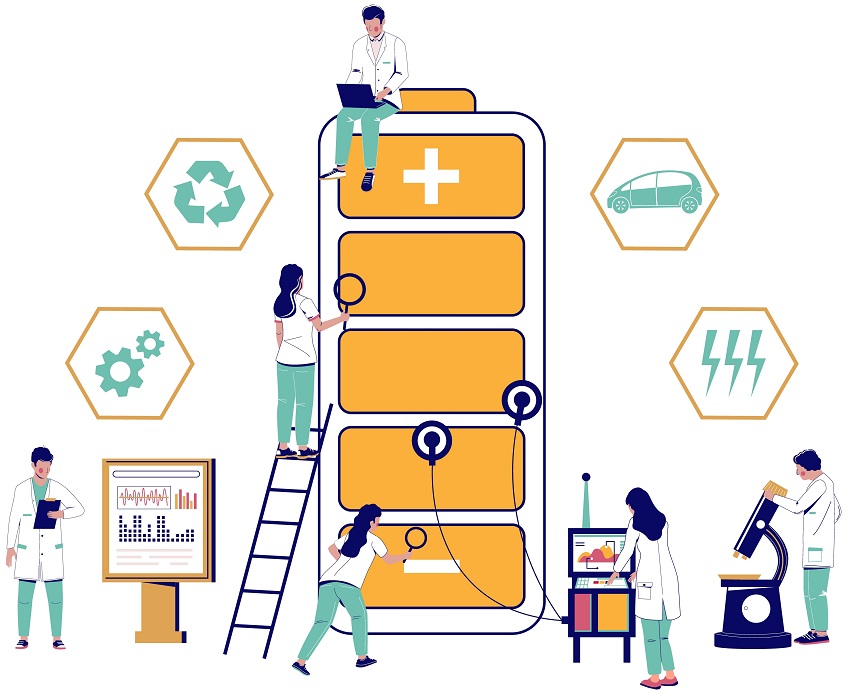Lithium batteries, while efficient and versatile, pose a significant environmental risk when mishandled or improperly disposed of. These batteries contain valuable and finite resources, such as lithium, cobalt, nickel, and other rare materials, which, when not recycled, contribute to resource scarcity and environmental pollution. Furthermore, their disposal in landfills can lead to chemical leakage, posing hazards to soil and groundwater.
Power Exchange Solutions’ “Revitalize Resources” is a dedicated lithium battery recycling service designed to address these challenges. Regardless of your battery material chemistry, quantity and type, our experienced team will take charge of the requirements. We also offer a comprehensive solution to responsibly manage lithium batteries, ensuring the recovery of valuable materials while minimizing environmental impact.
Power Exchange Solutions collaborate with global organizations to optimize the battery supply chain, facilitating intercontinental connections among our partners. We conduct comprehensive analyses to determine the most environmentally conscious approach for recycling and repurposing international shipments of battery materials, meticulously planning the most advantageous geographic and economic routes.
Having accumulated extensive expertise in equipment management and logistics over the years, we’ve cultivated partnerships across North America that enable us to proficiently carry out the essential operations and logistics for the safe, cost-effective, and efficient retrieval, transportation, and recycling of surplus and deteriorated battery materials.

Pyrometallurgy
High-temperature pyrometallurgical procedures can be used to isolate metals from various battery components. This method is ideal for recycling metals found in battery cathodes and anodes, which Battery components are melted at high temperatures so that metals with different melting points can be extracted. Although pyrometallurgy is efficient for some metals, it requires a lot of energy and often leads to waste.
Hydrometallurgy
Hydrometallurgical processes dissolve metals in water and then separate them from other battery materials. This technique is very selective and may be tailored to a variety of metals of interest. For instance:
- Acid Leaching:
Metals in the shredded supplies for batteries can be dissolved using acidic solutions. The resultant leachate is rich in metal ions that can be extracted through a process of selective precipitation. - Solvent Extraction:
Metals of interest can be extracted selectively from the leachate by using organic solvents. In this method, the aqueous phase is separated from the organic phase using a liquid-liquid phase separation. - Ion Exchange:
Metal ions in solutions are swapped for other ions attached to a solid substance in this process. Metals of interest can be concentrated after being separated selectively.
Electrometallurgy
Electrode surfaces are subjected to an electrical current that allows for the selective deposition of metals. Metals may be separated and recovered with great accuracy using this method. Metals can be recovered from batteries using electrometallurgical processes like electrowinning and electrorefining.
Precipitation
The process of precipitation requires the addition of certain chemicals to the wastewater solution in order to cause the solidification of metal compounds. Separating these chemicals allows for further processing. In order to clean the leachate, precipitation is often utilized when combined with other methods.
Solid-Liquid Separation
After the metal has been recovered, it is isolated from the solution using solid-liquid separation methods. This separation is often accomplished by filtration, centrifugation, or sedimentation.


